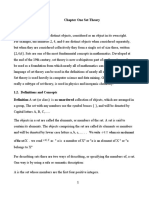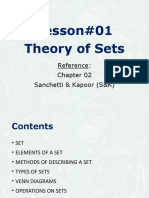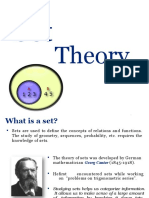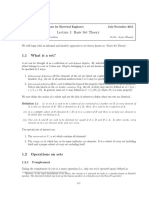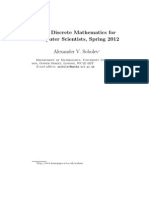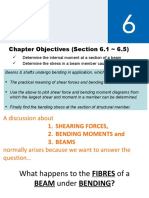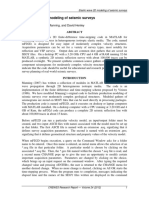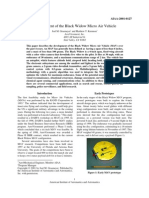0% found this document useful (0 votes)
27 views3 pagesSet Theory Basics for Math Students
Set theory is the mathematical study of collections of objects called sets, which are fundamental to various areas of mathematics. Key concepts include operations like union, intersection, and complement, as well as laws governing these operations. Venn diagrams are used to visually represent relationships between sets.
Uploaded by
sriharshareddy.0208Copyright
© © All Rights Reserved
We take content rights seriously. If you suspect this is your content, claim it here.
Available Formats
Download as DOCX, PDF, TXT or read online on Scribd
0% found this document useful (0 votes)
27 views3 pagesSet Theory Basics for Math Students
Set theory is the mathematical study of collections of objects called sets, which are fundamental to various areas of mathematics. Key concepts include operations like union, intersection, and complement, as well as laws governing these operations. Venn diagrams are used to visually represent relationships between sets.
Uploaded by
sriharshareddy.0208Copyright
© © All Rights Reserved
We take content rights seriously. If you suspect this is your content, claim it here.
Available Formats
Download as DOCX, PDF, TXT or read online on Scribd
/ 3










